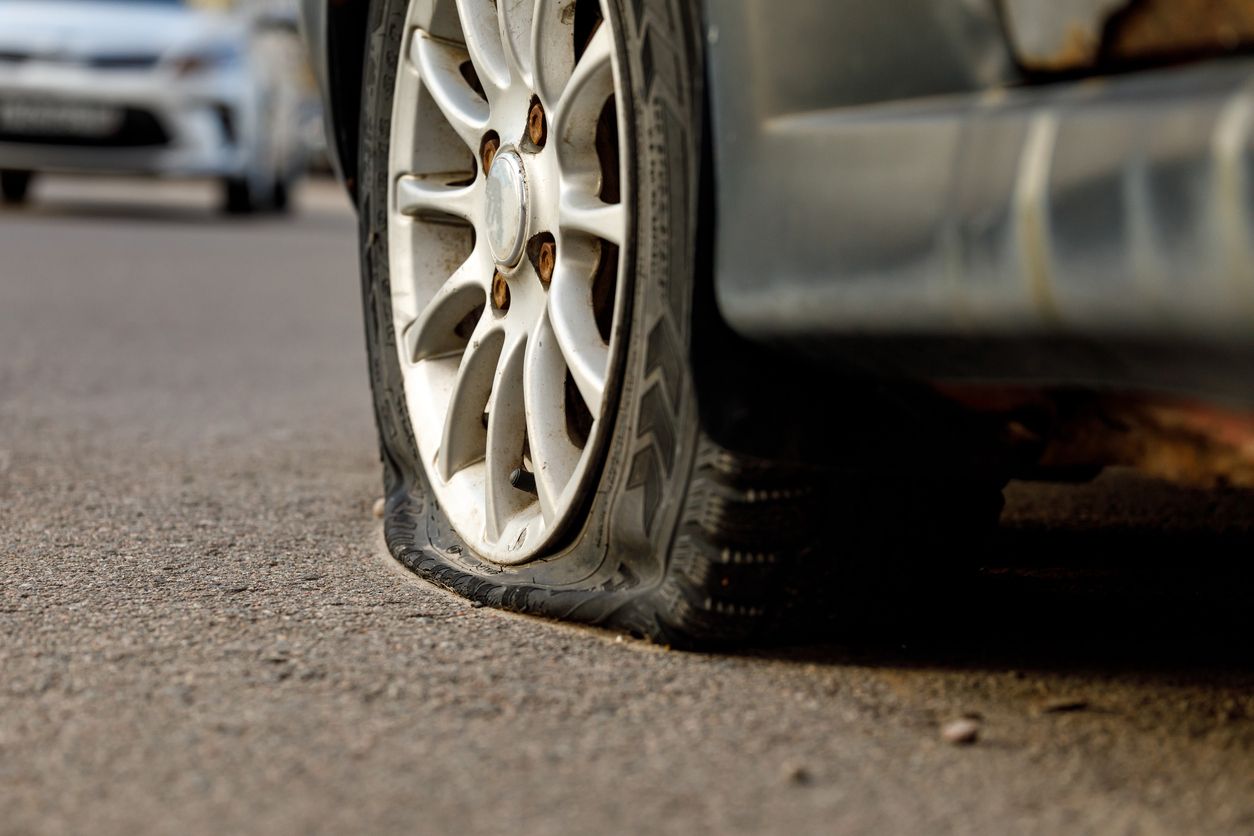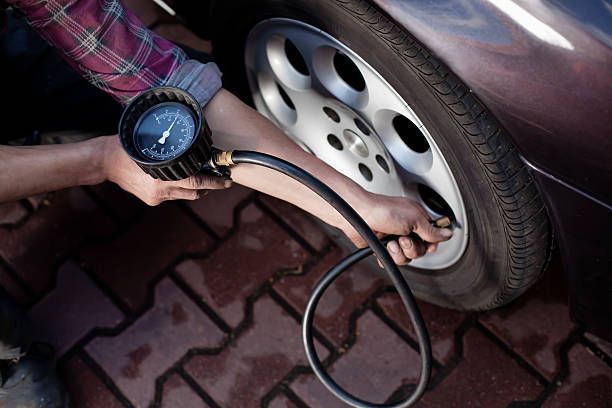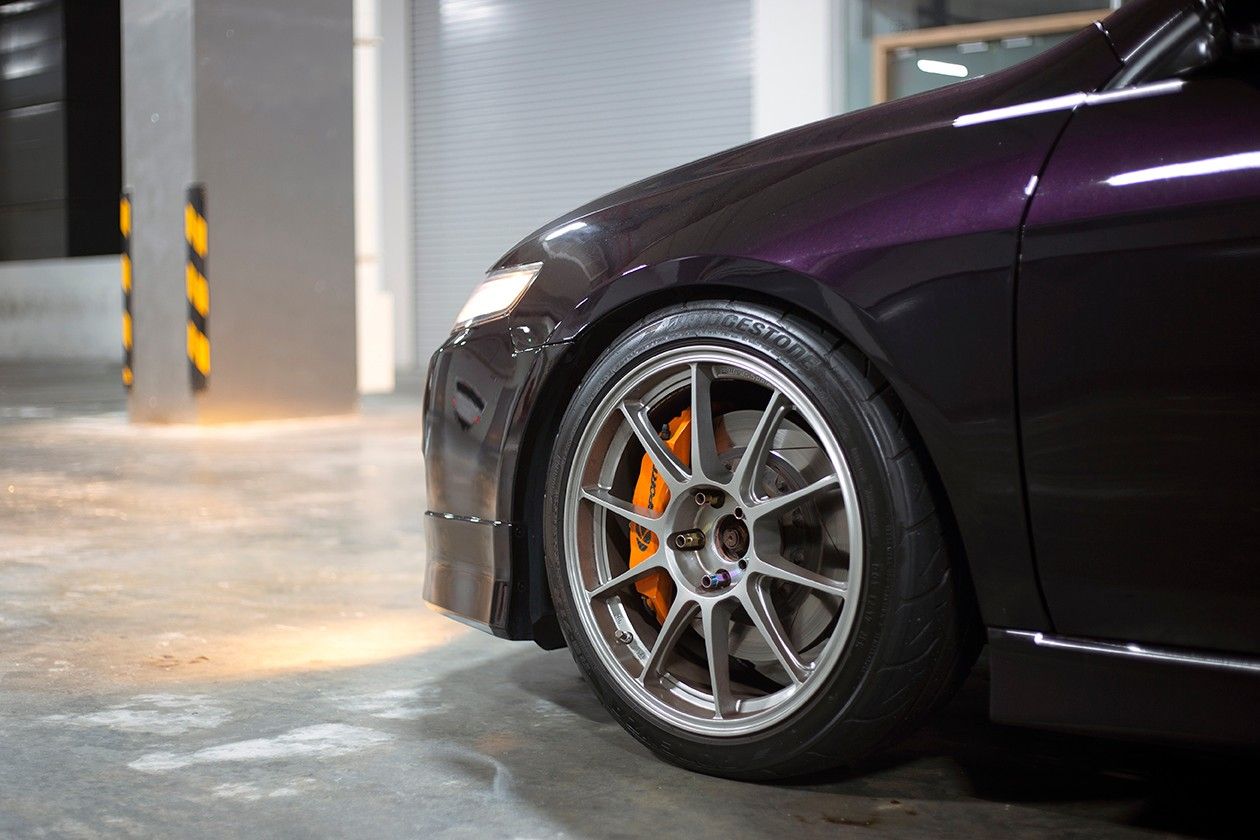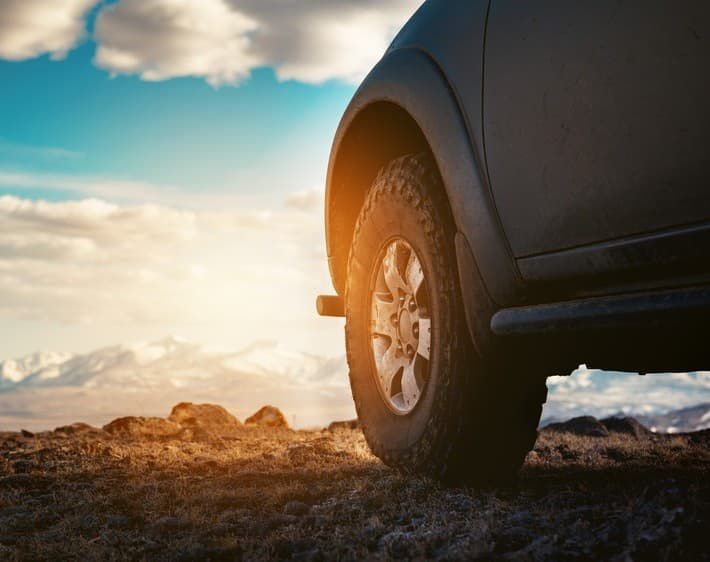Whether your flat tire was caused by a stray nail, sharp rock, or any other hazard, one thing is for certain: flat tires are a major inconvenience. The last place you want to be is stuck on the side of the road! Driving on a flat tire may even be a tempting solution to get you out of there. But is it bad to drive on a flat tire? Find out below if you can drive on a flat tire and what you need to know before you do.
Should I Drive on a Flat Tire?
No. Do not drive on a flat tire.
However, it may be necessary to travel a short distance on a flat tire when pulling over to the side of the road. But driving on a flat tire is a surefire way to put your passengers at risk and seriously damage your vehicle. If your vehicle is equipped with Bridgestone Run-Flat tires, you can typically drive 50 miles at up to 50mph on a punctured tire*.
Not only does driving on a flat tire dangerously decrease your vehicle’s handling, it may cause structural damage to the wheel, brakes, alignment, and potentially other components like your suspension and steering system. It may be tempting to “limp” your car to the nearest repair shop, but by driving on a flat, you’ll likely end up paying to repair much more than just the tire.
So if you're not supposed to drive on a flat, what should you do instead? The first thing to do is safely maneuver to the side of the road so you can address the problem properly. From there, you’ve got a few options.
First, you can either replace the flat with your spare tire or use an emergency sealant to fill any punctures. It’s worth noting, however, that emergency sealants typically only seal tires with punctures that are ¼ inch or smaller. They will not help if your tire is shredded, blown out, or has a large puncture.
If you don’t have a spare and sealant won’t do the trick, it’s time to call Firestone Roadside Assistance. Whether you need a tire change, a tow to the nearest auto shop, or other emergency automotive services, Firestone Roadside Assistance is ready to help 24 hours a day, seven days a week. When your car arrives at Firestone, our experienced technicians can help you decide if you need to repair or replace your flat tire.
*Repairable in limited conditions.
How to Avoid Driving on a Flat Tire
The best way to avoid driving on a flat tire is by not getting one in the first place. Here are a few things you can do to minimize the chances of a flat or blown-out tire:
Check Tire Pressure Monthly
The number one rule of tire maintenance is to check your tire pressure regularly. The National Highway Traffic Safety Administration (NHTSA) recommends checking the pressure on all of your tires — including the spare — at least once monthly. Tire pressure gauges are inexpensive and can help save you from tire trouble down the road.
Be sure to check tire pressure when the tires are “cold,” meaning at least three hours after driving. Not only can driving with underinflated tires lead to lower fuel efficiency, but they are more prone to wear and punctures as well.
Your Tire Pressure Monitoring System (TPMS) may not warn you about low tire pressure until a tire loses a significant amount of air or if all tires are equally low, and visual inspection can be tricky — many tires lose as much as half of their pressure before appearing flatter.
It’s best to use a tire pressure gauge to regularly check that your tires are at the manufacturer-recommended pressure (you can find this information in your owner’s manual or inside the driver-side door jamb).
Inspect & Rotate Tires Regularly
Along with checking your tire pressure monthly, visually inspect and rotate your tires as well. Tire rotations help spread out the wear on your tires to help them last longer. In general, you should try to rotate your tires every 5,000 to 10,000 miles. As a good rule of thumb, plan to have your tires rotated each time you get your oil changed.
It’s also smart to visually inspect your tires regularly for tread wear and signs of damage. Tires should have a minimum of 3/32 inches of tread depth to be safe and should be free from cracking, bulging sidewalls, or bubbles. (Some states and manufacturers may require even more minimum tread depth.)
Don’t Surpass the Tire Load Limit
Along with the recommended tire pressure, tires also have a maximum load rating and maximum pressure printed on the sidewall. Heavier loads put more strain on your tires, and exceeding their load limit could lead to a tire blowout.
Always be mindful of how much weight you are loading your car with and, if necessary, increase your tire pressure to handle the increased weight, but do not exceed the maximum tire pressure.
Watch for Road Hazards
Potholes, nails, pieces of glass — roadways are filled with potential hazards for your tires! While driving, always scan the road ahead for problems. Potholes and large road debris can damage your tires without actually puncturing them, but may cause cuts and bulges that could lead to a flat, critical tire damage or vibrations later on.
While metal pieces, rocks, and other hazards are not always avoidable, if you know you’re going to be driving near construction zones or other areas with a lot of road debris or damage, consider taking an alternate route. However, if you find that your tires are frequently flat, the problem may not be with the road, but with the tire itself.
Equip Your Vehicle With Run-Flat Tires
Whether you like it or not, flats just happen sometimes. There’s no way to spot every stray nail or piece of glass on the road before it punctures your tire. For those who like to be prepared, run-flat tires provide a convenient solution to the inevitable flat.
Run-flats, like Bridgestone DriveGuard tires, are self-supporting in the event of sudden tire pressure loss. With reinforced sidewalls and cutting-edge bead technology, these tires can support the weight of your vehicle for up to 50 miles and up to 50 MPH after a puncture*. Run-flat tires give you the peace of mind to know you and your family won’t be stranded on the side of the road if you get a flat.
*Repairable in limited conditions.
Got a Flat? Call Firestone Complete Auto Care Right Away
Call for Firestone Roadside Assistance when you have a flat tire! We'll tow you to the nearest Firestone Complete Auto Care and fix your flat or hook you up with a new tire if your tire can't be repaired.



